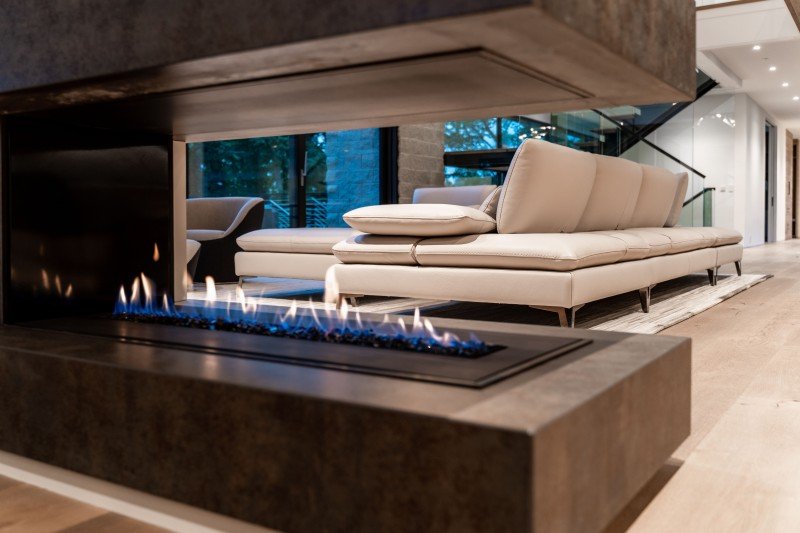fireplaces4192
About fireplaces4192
The Ultimate Guide to Fireplaces: Types, Advantages, Maintenance, and More
Fireplaces have long been a symbol of warmth and comfort, providing not only a source of heat but also creating a focal point in home design. With a variety of types available, each offering unique benefits and aesthetics, selecting the right fireplace can elevate a living space significantly. This article explores different types of fireplaces, their advantages, maintenance tips, and answers to frequently asked questions.
Types of Fireplaces
Fireplaces can be categorized based on fuel types and design. Here are some common categories:
| Type | Description | Fuel Source |
|---|---|---|
| Wood-Burning | Traditional fireplaces that require firewood. They provide beautiful flames and heat. | Firewood |
| Gas Fireplaces | More modern options that use natural gas or propane for convenience and efficient heat. | Natural gas/Propane |
| Electric | Offer the ambiance of a flame without the need for venting. Ideal for small spaces. | Electricity |
| Pellet Stoves | Use compressed wood or biomass pellets. They are highly efficient and require less maintenance. | Biomass pellets |
| Bioethanol | Use bioethanol fuel for a clean-burning, ventless solution. Ideal for indoor and outdoor use. | Bioethanol |
| Outdoor Fireplaces | Built for outdoor spaces, these units can be utilized for cooking or as decorative elements. | Wood, gas, or propane |
Pros and Cons of Each Type
Wood-Burning Fireplaces
Advantages:
- Natural ambiance and crackling sound.
- High heat output.
- Can use renewable resources if sustainably sourced.
Disadvantages:
- Requires more maintenance (wood storage, cleaning ashes).
- Less efficient heating compared to gas options.
Gas Fireplaces
Advantages:
- Convenient and easy to operate with a switch or remote.
- Less pollution and reduced emissions compared to wood-burning options.
- Generate a steady, even heat.
Disadvantages:
- Depends on a gas line, which may not be available in all areas.
- Require venting in some setups.
Electric Fireplaces
Advantages:
- No need for venting or chimney maintenance.
- Easy installation and use.
- Safe and efficient for small spaces.
Disadvantages:
- Limited heat output compared to gas and wood options.
- Lacks the authentic visual and auditory appeal of real flames.
Pellet Stoves
Advantages:
- Highly efficient and eco-friendly.
- Use compressed wood, leading to less waste.
- Requires less frequent refueling.
Disadvantages:
- Higher upfront cost for the stove and installation.
- Requires electricity to operate.
Bioethanol Fireplaces
Advantages:
- Clean burning and easy to install.
- Flexible design options, including portable models.
- No need for a chimney, venting, or gas lines.
Disadvantages:
- Can be expensive in terms of fuel.
- Provides less heat compared to traditional fireplaces.
Outdoor Fireplaces
Advantages:
- Great for social gatherings and outdoor cooking.
- Adds ambiance to patios and backyards.
- Various fuel types can be used.
Disadvantages:
- Weather dependent for use.
- Can require significant space and setup time.
Benefits of Having a Fireplace
Incorporating a fireplace into a home design offers numerous advantages beyond aesthetics:
- Comfort and Warmth: A fireplace provides significant heating, making chilly nights cozier.
- Aesthetic Appeal: Fireplaces serve as stunning focal points in any room, enhancing the overall design.
- Increased Home Value: A well-designed fireplace can raise property value and attract potential buyers.
- Energy Efficiency: Modern fireplaces, especially gas and pellet options, can be highly efficient and reduce heating costs.
Maintenance Tips for Fireplaces
Regular maintenance is essential for the safety and longevity of a fireplace. Here are some tips for maintaining different types:
-
Wood-Burning Fireplaces:
- Clean the chimney annually to prevent creosote buildup.
- Store firewood properly and protect it from moisture.
-
Gas Fireplaces:
- Schedule professional inspections at least once a year.
- Keep the logs and glass clean to maximize efficiency.
-
Electric Fireplaces:
- Dust the unit regularly to maintain appearance.
- Check electrical connections annually for safety.
-
Pellet Stoves:
- Clean the hopper and burn pot after each use to ensure efficiency.
- Inspect and vacuum the venting system regularly.
-
Bioethanol Fireplaces:
- Regularly check for leaks and ensure the burners are clean.
- Use bioethanol fuel specifically designed for fireplaces.
FAQs About Fireplaces
1. What permits do I need to install a fireplace?
Depending on local building codes, various permits may be required for installation. Always consult with a qualified contractor or local authorities before proceeding.
2. Can I convert my wood-burning fireplace to gas?
Yes, it is often possible to convert a wood-burning fireplace into a gas fireplace, but this process usually requires professional installation and possible modifications to the existing structure.
3. How do I choose the right fireplace for my home?
Consider factors such as the size of the space, available fuel sources, design preferences, and maintenance requirements when selecting a fireplace.
4. Is it safe to operate a fireplace during severe weather?
While fireplaces can provide heat during storms, it’s essential to avoid using them in extreme conditions where there may be a risk of fires or carbon monoxide buildup.

5. How do I properly vent a fireplace?
Ventilation requirements depend on the type of purchase fireplace mantel. Gas and wood fireplaces may require chimney or flue systems, while electric and bioethanol units do not.
Fireplaces play a significant role in home comfort and aesthetics, providing warmth and an inviting ambiance, whether through the traditional crackling of wood or the modern convenience of gas. Understanding the various types, benefits, and maintenance needs can help homeowners choose the perfect fireplace for their space, ensuring that it continues to provide warmth and charm for years to come.
No listing found.